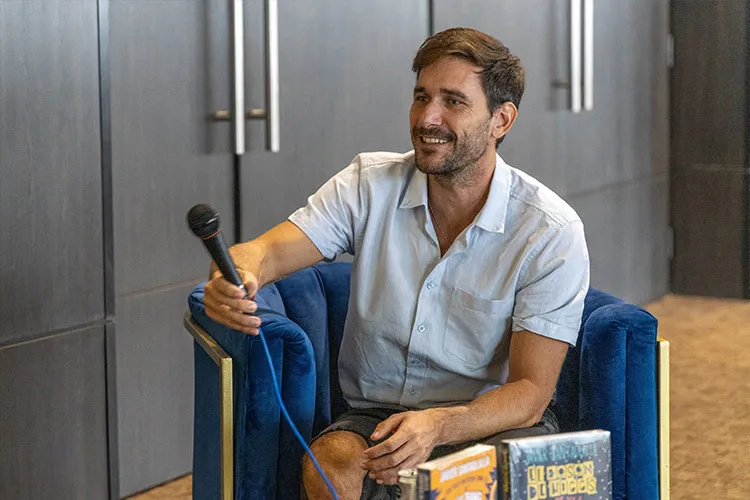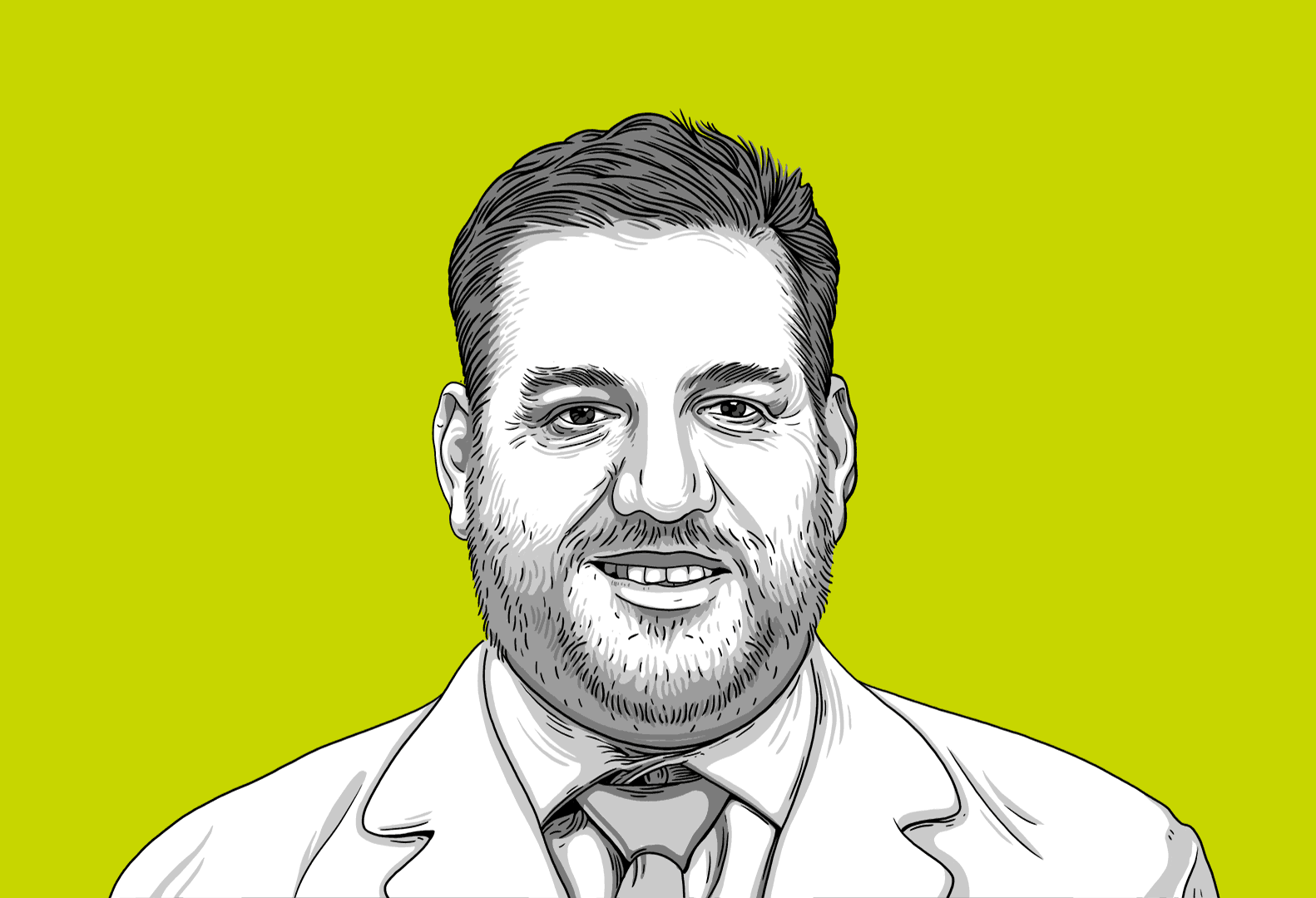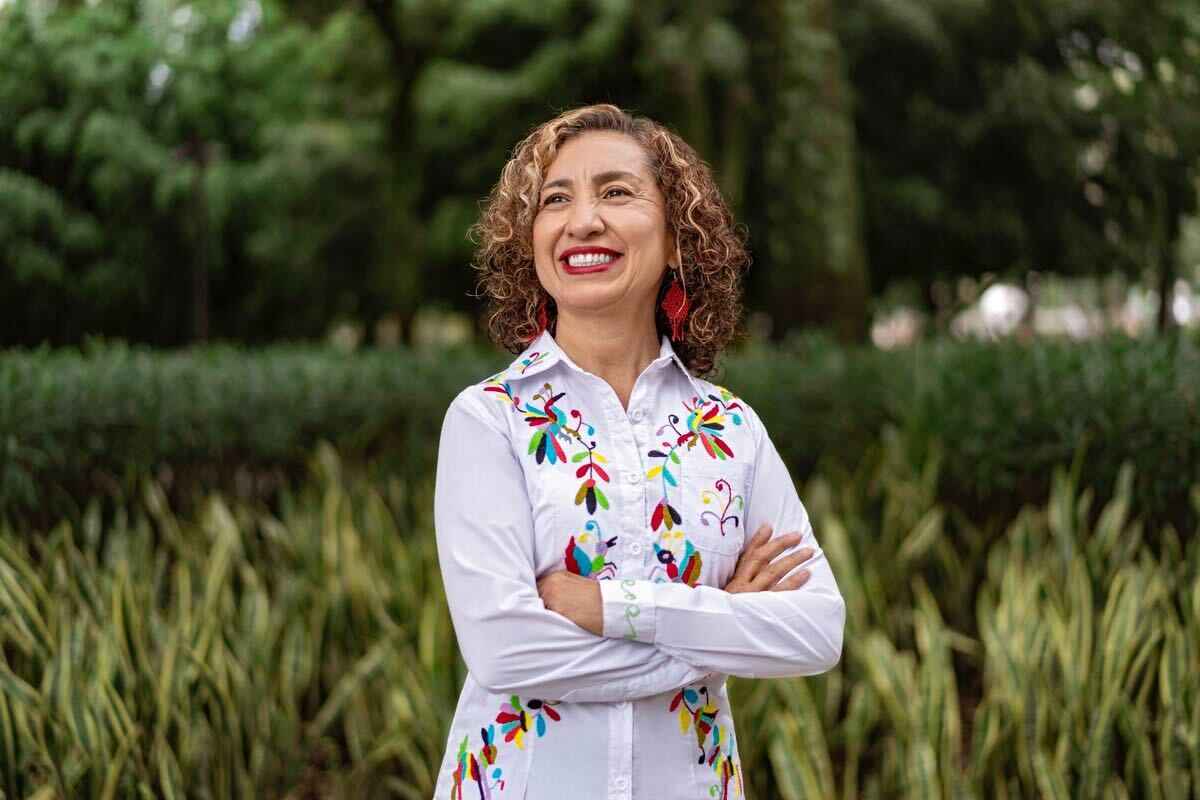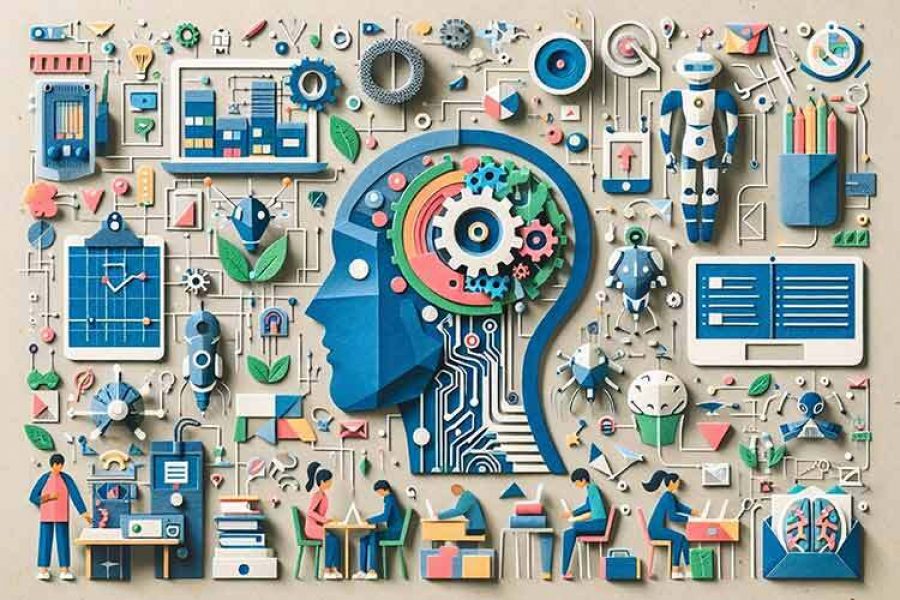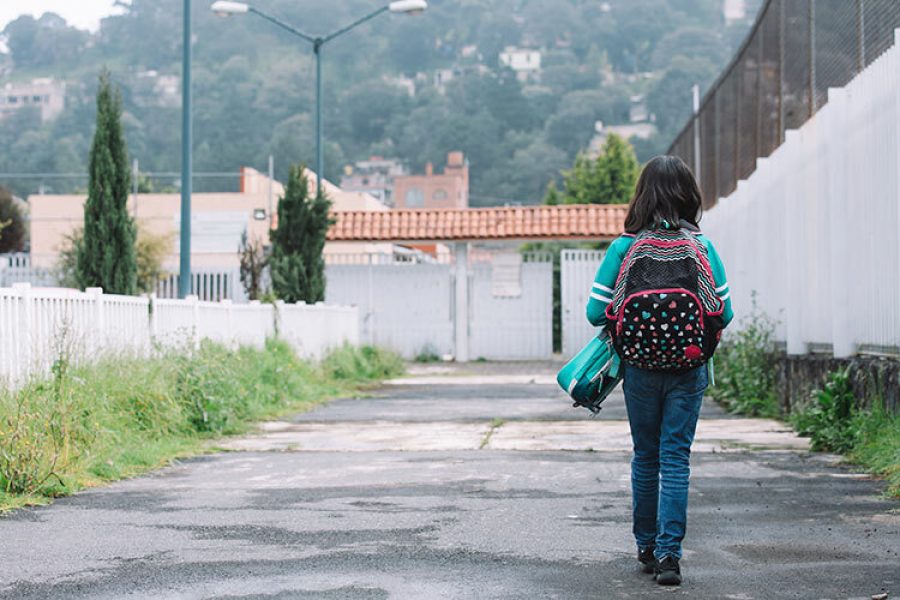Javier Santaolalla walks through, the lights come on, a rock song from the ’70s plays, and people lift their phones to the middle aisle, he’s science communicator and attracts large crowds, like a rockstar.
He’s not here to sing or dance; he’s here to talk about physics, the universe, particles, quantum mechanics, and even his own experiences of love and heartache, all revolving around his passion and what has made him a success on social media: science.
People of different ages, sexual orientations, and religious beliefs clap and cheer as Santaolalla sprints down the aisle with his arms raised, like a professional wrestler entering the arena.
He interacts with some people to the beat of AC DC’s “Highway to Hell,” dressed in knee-ripped jeans, a casual short-sleeved blue shirt, and gray sneakers. He has an unfastened top button, necklace, multiple wristbands, and a friendship bracelet, one of those Taylor Swift’s fans have recently made popular.
A woman behind me makes a disapproving noise. When I look at her, she narrows one eye, as if she can’t believe the event she’s attending is about science, while moving her head in search of a sight of the show taking place in the center of the auditorium.
Javier Santaolalla was born in Burgos, Spain, in 1982, and grew up in Las Palmas de Gran Canaria. He received a Ph.D. in physics and telecommunications engineering from the European Organization for Nuclear Research (CERN).
As the ovation continues, I realize I’m not at a concert, but instead at a conference featuring one of the researchers involved in the discovery of the Higgs boson, also known as the “God’s particle,” and one of the greatest scientific discoveries of our time.
I interviewed Santaolalla a few hours before he spoke at the Monterrey International Book Fair in Nuevo León. He told me about a conversation he had with a friend, a professional musician, that led to the end of his academic research career and the beginning of a new one in the area of scientific communication.
Unlike the typical image of a scientist in a lab coat, tie, and shiny shoes, Santaolalla sat comfortably on the couch, humming a popular song by Grupo Frontera and Morat. He greeted everyone and made a joke about the clouds that had blocked the view of that day’s solar eclipse in Monterrey.
Before me stands a science communicator for younger people, someone who uses pop culture allusions to describe concepts such as antimatter, string theory, and particle collisions. He has over 10,000,000 followers on YouTube, TikTok, and Instagram, and on a rainy day in Nuevo León’s capital, a mainly young audience is shouting his name.
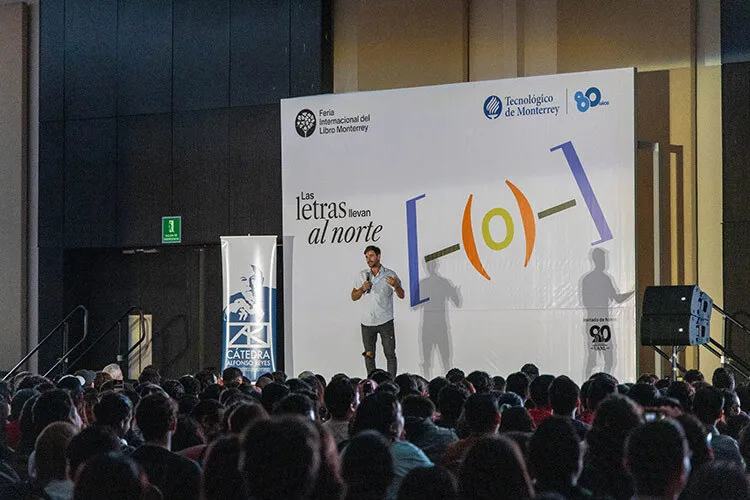
Santaolalla and Science Communication on Social Media
Natalia, Aldo, and Esteban are three individuals united by the same goal: to listen to Santaolalla, get his signature on one of his books, and perhaps take a photo to share on social media. The auditorium was initially designed for 300 people but was expanded after registrations topped 1,500.
Esteban, 39 years old, went from Allende, Nuevo León, a 60-kilometer route that might take at least a couple of hours and up to three or four in the worst-case scenario due to traffic and weather.
He became interested in science because of Carl Sagan, one of the finest scientific communicators of all time, as well as Neil deGrasse Tyson and other famous scientists such as Stephen Hawking and Albert Einstein.
Santaolalla was added to his list a few years ago, and he follows his posts on YouTube and Instagram, however, he doesn’t follow his TikTok account because it is not one of the social networks he uses.
Santaolalla is more than a science content provider, according to Aldo Villaseñor, a student of Industrial Physics Engineering at Tec de Monterrey.
He was not only an inspiration, but also one of the reasons he chose to pursue a career in that field.
“I was captivated by the themes in his videos. “There are some advanced topics in the field, and watching his videos helps me understand certain things,” admits Villaseñor.
Natalia Trevilla, aged 17, holds a copy of Santaolalla’s 2016 book El Bosón de Higgs no te va a hacer la cama (The Higgs Boson Won’t Make Your Bed). She persuaded her parents to bring her to the Monterrey Book Fair with one of her best friends, who had both registered for the event weeks before when it was announced.
Natalia subscribed to Santaolalla’s channels because of the simple way that he discusses complicated concepts, as well as the charm, humor, and allusions he uses to communicate science.
“I hope that more people meet him and hear him speak about his work at the particle collider. He’s like a new Carl Sagan,” Esteban adds as he walks away to join the queue for Santaolalla’s book signing.
The Quantum OXXO, a Place to Buy Non-Existent Particles
Santaolalla’s lecture feels as entertaining as some of his videos on YouTube, TikTok, or Instagram. When I heard the term “Quantum OXXO,” I had to laugh, as many others did.
This is how Santaolalla simplifies science to make it accessible to anybody, or at least anyone who has visited the OXXO grocery chain in México.
“There is no such thing as empty space; space devoid of matter has no lack of fields, and quantum fields are a type of space energy that gives rise to matter. Empty space is similar to OXXO, where you can find anything. What Einstein and others discovered is that you can buy particles in this OXXO of matter with cosmic money: energy,” he explains.
The particles that vanished after the Big Bang and the point of origin of our universe still exist in a quantum vacuum, and the only way to study them is through particle collisions, which Santaolalla was involved in during the Higgs boson discovery.
For an hour, Santaolalla explained it to ordinary individuals who may not study science but are passionate about knowing their universe, much like Prometheus who steals fire and gives it to human beings.
In his speech, Einstein, Higgs, and Newton’s equations were blended in with personal experiences, such as when a lover went overseas or when he lost his first love in elementary school.
He filled in the holes in the scientific conversation with memes and allusions that not only entertained the audience but also taught science to over a thousand individuals, even if it didn’t appear that way.
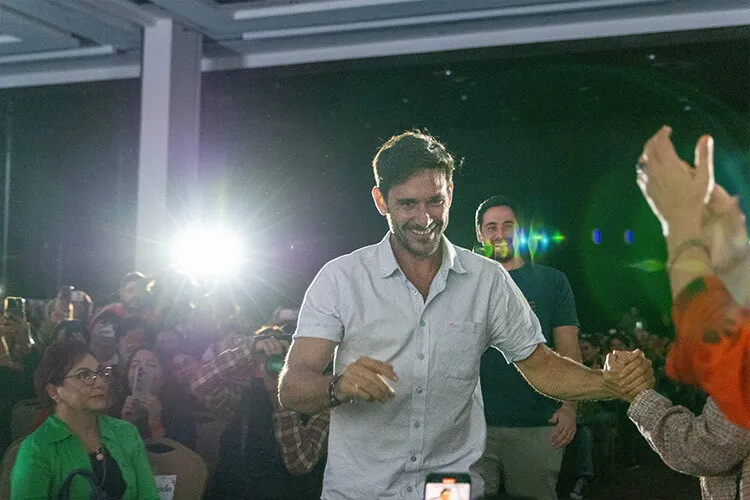
A Legacy of Science, Adventure, and Happiness
Some scientific purists could have feared that Santaolalla weakened scientific rigor. “What matters to me is honesty with myself and with others; I owe it to them. I’ve made errors in the past, but never with malice. In that sense, I counteract disinformation by being honest with the reality I live in,” he explained.
His shift from scientific research occurred in 2014 when there was no established profession in science communication and no financial support structures.
“It was a step into the unknown, going from having a job to having nothing and getting to start from scratch. Now I see it, and I believe I did it mainly because of my curiosity. That’s the message I want to send to young people: Everything will be okay in the end; life has many twists and turns and allows for reinvention and rebuilding,” he said.
So I questioned him about his legacy, and how he wanted to be remembered when he died.
He doesn’t talk about science, a professional career, awards, or even the Higgs boson project, which encapsulated his name in science history for all time.
“I want to be remembered as a happy person who enjoys life, as someone who is passionate about experiencing, growing, and sharing. I’d like to think that I’ve motivated young people to get off the sofa, turn off the television, and go live their lives. Beyond becoming scientists, physicians, and particle discoverers, I wish that everyone may find themselves.”
The conference comes to an end, and nearly no one departs. They stay to greet Santaolalla, take photographs, or hoping get an autograph from somebody who has taught them for approximately an hour in an uncommon but enjoyable science class.
